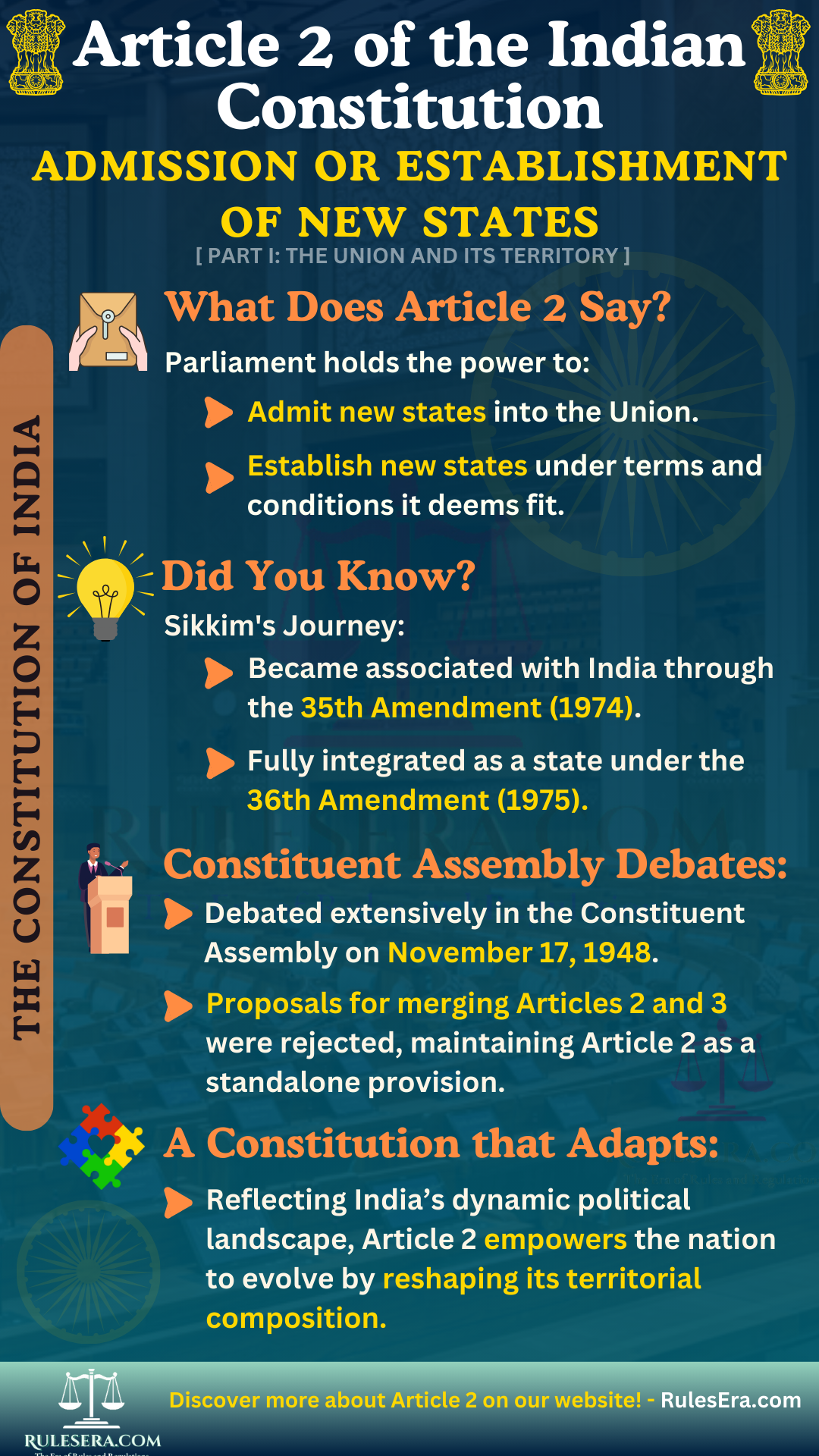Part I: The Union and Its Territory
Article 2: Admission or Establishment of New States

Introduction:
Article 2 is part of the framework that defines India’s territorial composition. It grants Parliament the authority to expand the Union by admitting new states or establishing states from territories already within or outside India. This provision ensures that the country can adapt to changing political boundaries or circumstances.
Powers of Parliament to Admit or Establish New States:
The primary function of Article 2 is to authorize Parliament to admit new states into the Union. This power extends to the creation of states from territories that are either already part of India or acquired through means like treaties. Parliament has the discretion to determine the terms and conditions under which these states are admitted or established, giving it considerable authority in shaping the Union.
Legislative History:
Article 2 of the Indian Constitution, which underwent extensive deliberation in the Constituent Assembly on November 17, 1948, was ultimately incorporated into the Constitution of India.
Debates and Deliberations:
During the discussion on Articles 2 and 3 of the Draft Constitution, Mr. Naziruddin Ahmad proposed an amendment aimed at consolidating and streamlining the two articles. He suggested combining Article 2, which allows Parliament to admit new states, with Article 3, which grants powers to reorganize state boundaries, to avoid redundancy.
- Mr. Ahmad questioned the repeated use of "from time to time" in Article 2, arguing that the General Clauses Act already covered periodic exercise of powers unless otherwise stated.
- Kazi Syed Karimuddin opposed merging Articles 2 and 3, emphasizing their distinct functions.
- H.V. Kamath noted a minor oversight, suggesting it should specify "Parliament of the Union" for clarity.
Despite these discussions, Dr. B.R. Ambedkar and others opposed the proposed changes, and Article 2 was adopted as it stood.
Frequently Asked Questions (FAQs):
Article 2 grants Parliament the power to admit or establish new states, ensuring flexibility in India’s territorial structure.
The phrase refers to the legal, administrative, or political arrangements made by Parliament while admitting or establishing a new state.
Clause (2A) was omitted after the Thirty-sixth Amendment in 1975, when Sikkim was fully integrated into India as a state.